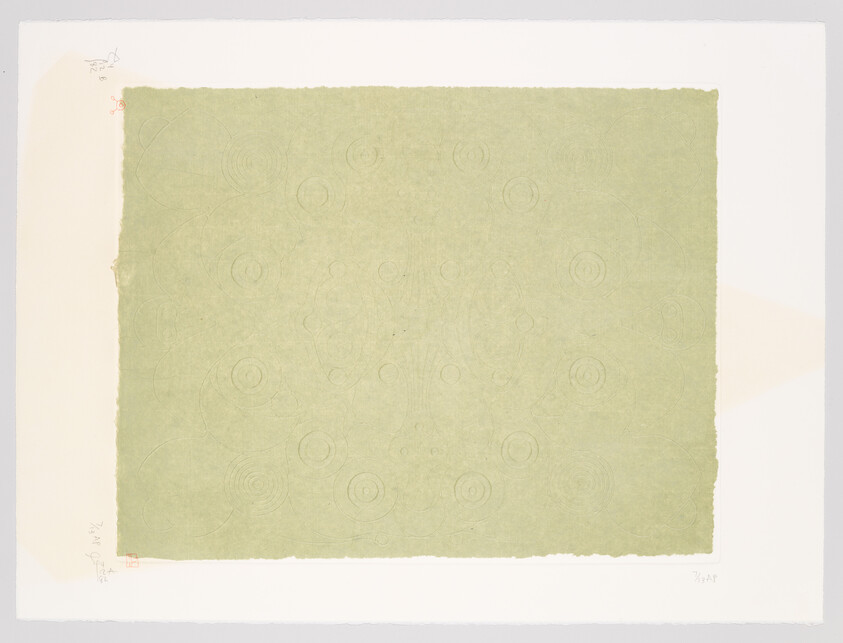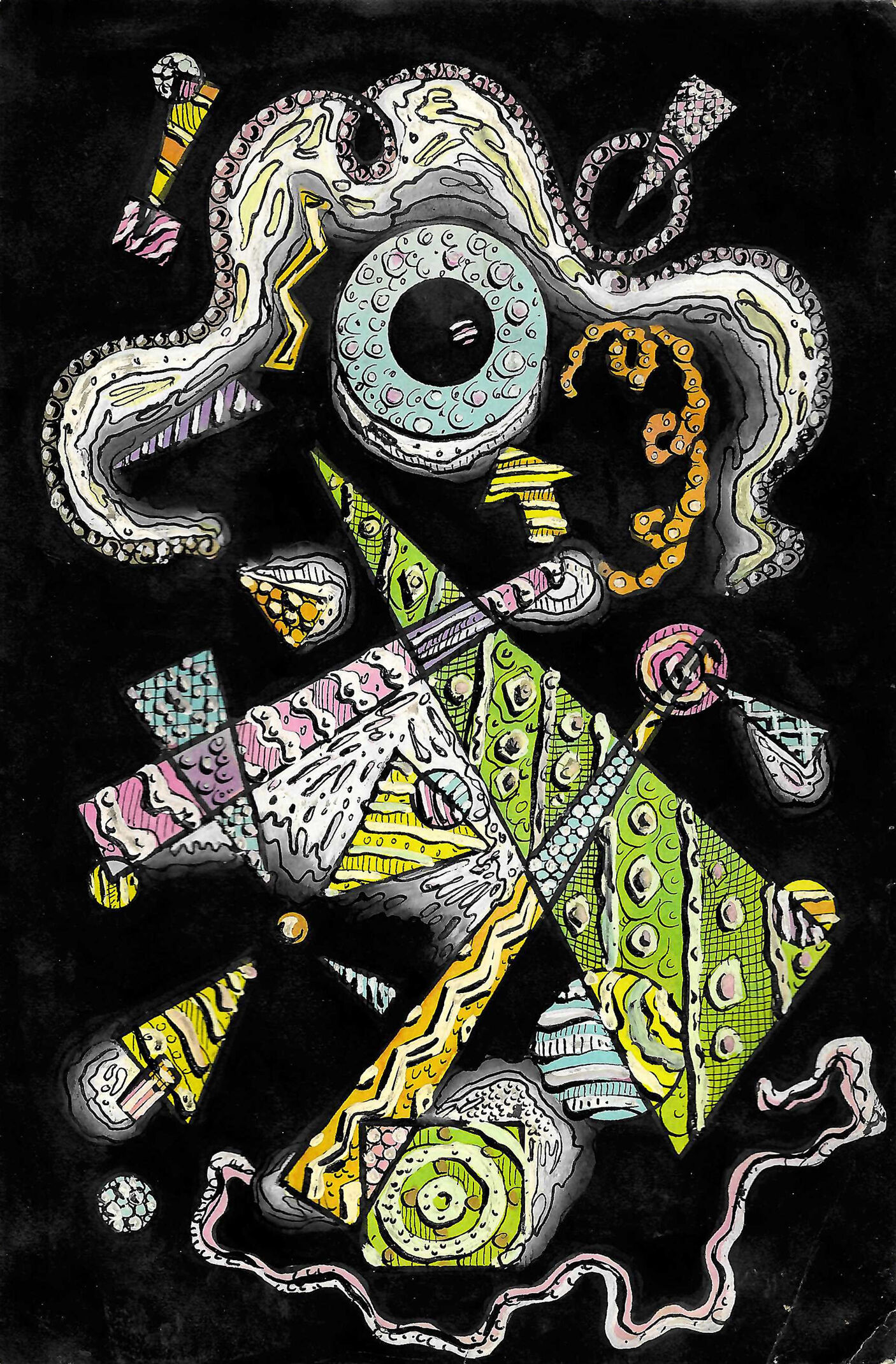Verbal Description: Introduction
Sept 26, 2023
0:00
Verbal Description: Introduction
0:00
Narrator: Welcome to Fragments of a Faith Forgotten: The Art of Harry Smith.
When you exit the elevators on the fifth floor and turn to the right, you will be greeted by an opaque, dark curtain hung diagonally from the top of the gallery space to the floor. After entering through the opening beneath the curtain on the left side, you will encounter a dimly lit rectangular space with multiple sculptural elements. The floor is firm and untextured, and the walls are painted in a medium-toned gray. The introductory text for the exhibition is on the wall directly to the right. In front of you is a wall with Film #15 (Untitled animation of Seminole patchwork patterns) playing; this is a silent film, ten minutes long. To the left, a small television sits on a white pedestal, playing a silent, four minute screen test of Harry Smith by the artist Andy Warhol. The black and white video shows Smith making string figures, a creative form he was particularly interested in tracing across different cultures and places. Behind the small television, a large boxing ring, around 16 feet long, is turned on its side, with one side of the roped ring walls resting on the floor and the underside of the ring facing the south wall of the gallery space.
If you turn and move to the left about 35 feet, you will reach the entrance to a series of walls arranged to create a zigzag hallway. Each pane of the zigzag walls displays an arrangement of Harry Smith’s ephemera, collected objects, and artwork, including a few video works. The sound playing in this area comes from a small directional speaker beside Film No. 11: Mirror Animations, playing Mysterioso by the Thelonious Monk Quartet. Visitors are invited to alternate between the east side walls and west side walls, in an order demarcated by roman numerals on the walls above the artwork, but there is no incorrect way to experience the gallery.
Upon emerging from the hallway, you are invited to turn left and move through an open entryway with a partial curtain hanging from it into the listening lounge, a room with floor to ceiling windows on the Museum’s west side wall and four couches on the opposite wall. The lighting in this room varies, as the only light in the space during daytime hours comes from outside through the windows; during evening hours, the space is lit with overhead lights. A table with a built-in monitor sits in front of each one of the couches. Speakers have been installed in the wall behind the couches, and the speaker directly to the left of the entryway does not have a couch directly in front of it; this space is intended for use by anyone with a mobility device. Songs from Smith’s Anthology of Folk Music are playing through the speakers, while liner notes, which include information about each of the songs, appear on the monitor. A copy of the original liner notes, as well as a large print version, are available on the tables.
You can leave the listening lounge by exiting through the direction you came in from. To the right, after re-entering the gallery, is a black box theater alcove, where Film No. 12: Heaven and Earth Magic Feature is playing on a 10 foot screen occupying the west wall. This film is 66 minutes long. The found noises, which constitute the soundtrack of the film, are playing on a speaker overhead. Three one-seater cushioned stools are available as seats.
In front of the black box space, two walls intersect in the center to create a pinwheel shape. On the right side of three of the four triangles created by the intersection is a lightbox transparency of one of Harry Smith’s jazz paintings. On the left side of two of the four sections is a handheld monophone; you are intended to raise the device to your ear to listen to the jazz song that inspired the painting. On one of the sections to the left, a speaker is embedded in the wall, playing the jazz into the space. In the final section, a functional model of a monochord instrument is mounted on the right side wall; visitors are invited to touch and pluck the monochord while leaving it on the wall. On the left side, two framed covers of the Anthology of American Folk Music featuring the monochord hang; these are not intended to be touched.
Moving away from the pinwheel structure, you will encounter a large gray sculptural element separating the gallery space; it takes the shape of the outline of the silhouette of two faces looking at each other, which also creates a vase-like shape. This element of the exhibition design is 12 feet tall, 11 feet long, and two feet wide, and was created by the artist Carol Bove (boh-vay), one of the co-curators of the exhibition. Beyond this large gray vase, Smith’s film Film No. 18: Mahagonny is projected onto the bottom of the boxing ring flipped on its side. There is ample seating provided around twenty feet from the screen. The speakers for the film are set on the floor in between the screen and the seating; they are 17 feet apart from each other, 14 feet from the screen and 17 inches from the seating. Raised tape covers the cord on the floor between them.
To leave, you will exit through the opened side of the diagonally hanging curtain positioned at the entrance of the gallery. To access transcripts and sound descriptions of works with sound, scroll through the Access section of the show’s audio guide. Thank you for joining us!


